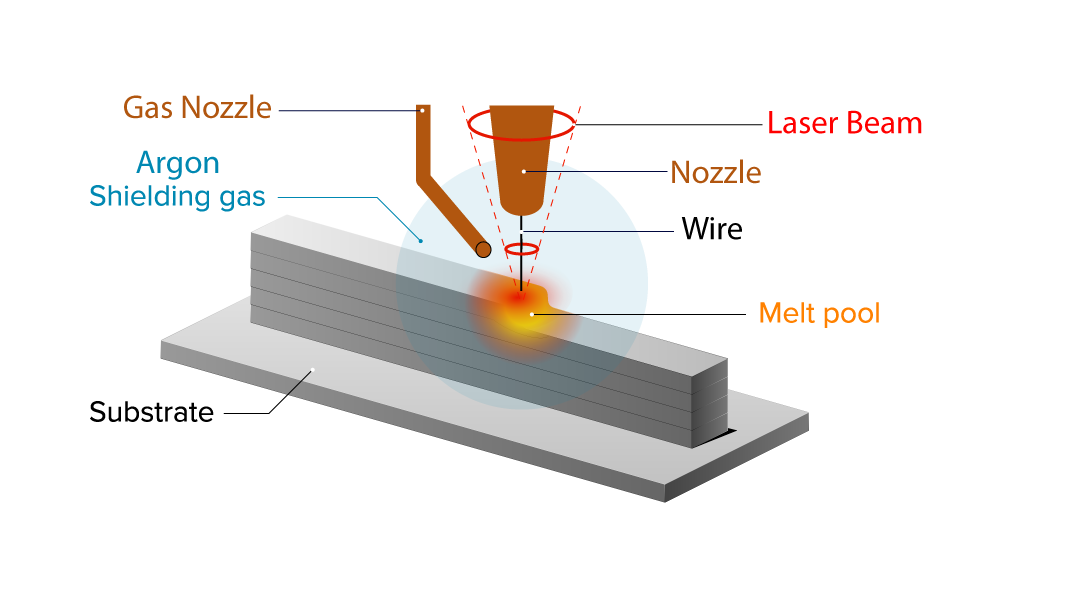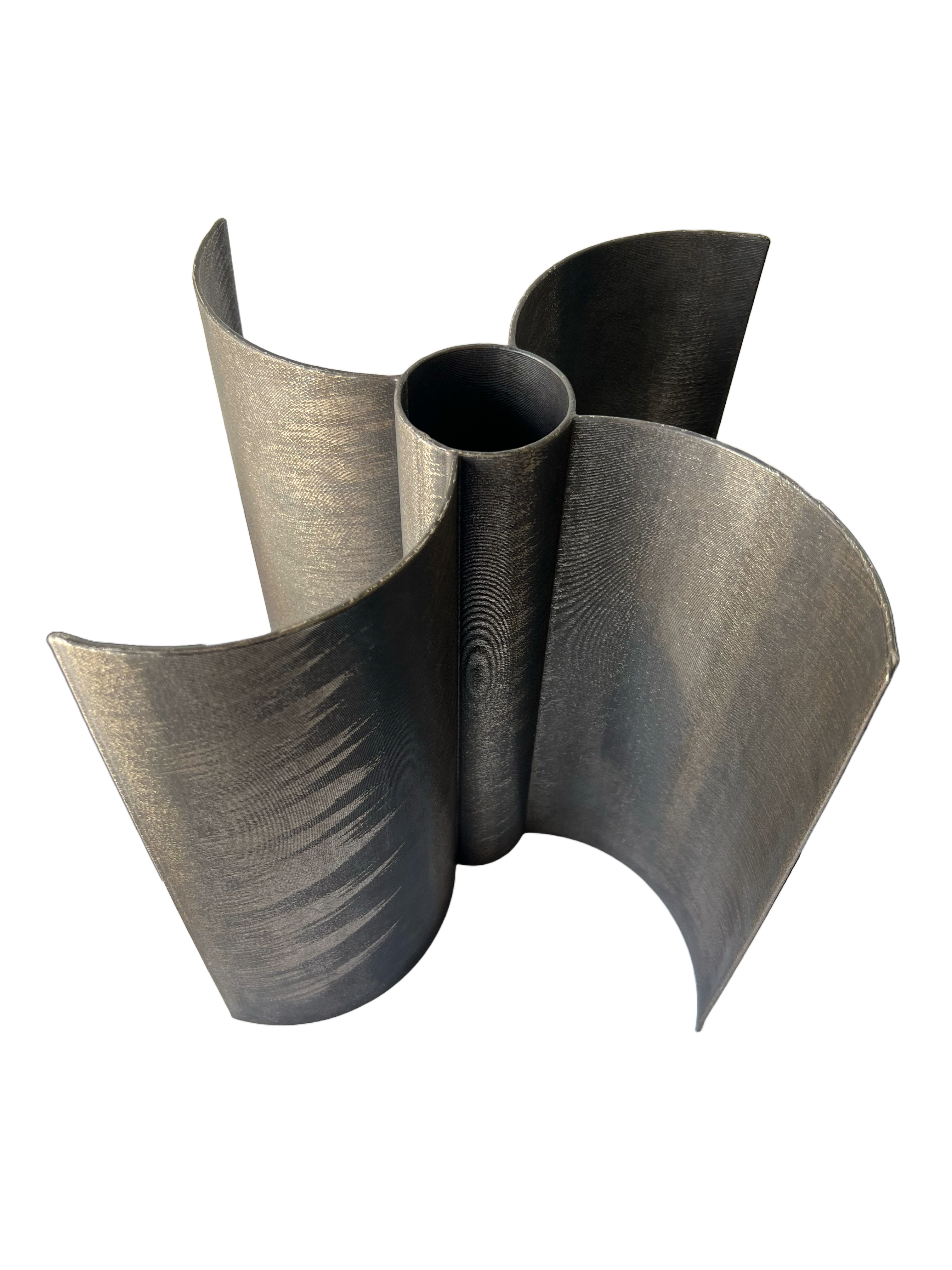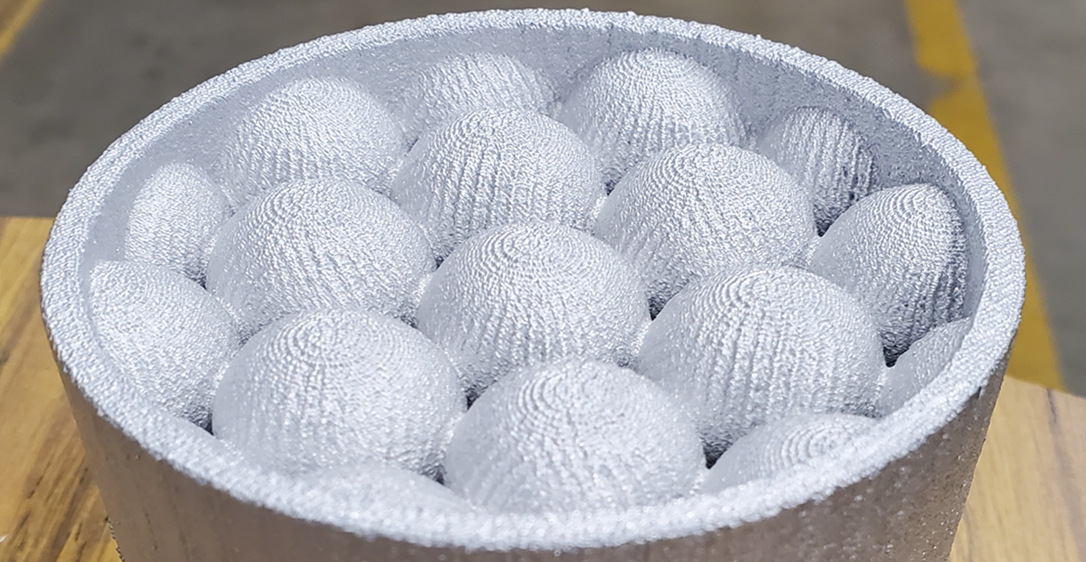Laser Directed Energy Deposition (LDED) Technology
Direct Energy Deposition (DED) employs a directed heat source to melt feedstock material, enabling the additive manufacturing of large-scale metallic components at significantly higher deposition rates than other AM technologies like Powder Bed Fusion (PBF).
In the case of DED technologies, the feedstock material, whether in wire or powder form, is guided through a narrow nozzle and melted by a heat source. At ADDiTEC, we utilize Wire-Laser Metal Deposition, also known as Laser Direct Energy Deposition (LDED). This innovative process involves stacking weld beads when heated with the laser, generating a melt pool.
By adopting a layer-by-layer approach to add material, LDED minimizes material waste, setting it apart from conventional manufacturing methods.

Advantages of the Laser Directed Energy Deposition Technology:
High production rate up to 4 kg/h
Wire-feedstock is the safest, cleanest and easiest to work with
Large build volume with High resolution
No waste of material
Faster production rates
99.99% Part Density. Mechanical properties outperform casted and compete with forged material, with even better density than original material
Low cost of the wire feedstock
Higher flexibility
Affordable parts within hours
Access to a wider selection of materials
Lower machine costs compared to other technologies

Comparing LDED with other Technologies:
ADDiTEC’s LDED when comparing it with traditional manufacturing processes the outcome components in a near-net-shape manufacturing. This technology is capable of achieving remarkably high resolutions (1.5mm) specially for intricate and small features, higher tolerances (±0.25mm) and higher surface roughness (~1 mm) therefore requiring a machining process. By manufacturing components in a near-net-shape a relatively fast delivery can be guaranteed.
ADDiTEC’s LDED technology has significant strengths over traditional processes like forging and casting when it comes to improving overall production costs, since it reduces material waste and eliminates the need for costly and time-consuming tooling with long lead times. As an example, forging produces NNS parts that typically require removal of 50%-80% of the forged material.
When comparing it with other additive manufacturing technologies such as Wire Arc Additive Manufacturing (WAAM), ADDiTEC’s LDED process achieves higher resolution capabilities, allowing for the production of parts with intricate details and fine features in shorter periods. The amount of over-thickness required in ADDiTEC’s LDED processes is generally lower compared to WAAM processes.
Redefining the Future of Metal Manufacturing Parts
ADDiTEC’s Laser Direct Energy Deposition (LDED) technology redefines metal additive manufacturing, offering unmatched efficiency and precision. With a rapid production rate of up to 4 kg/h, large build volume, and 99.99% part density, LDED excels in delivering cost-effective, high-quality components.
Boasting low-cost wire feedstock, access to diverse materials, and faster production rates, ADDiTEC’s LDED ensures near-net-shape manufacturing with intricate details. It reduces material waste, eliminates complex tooling, and accelerates production timelines.
In a landscape where precision, speed, and cost-effectiveness matter, ADDiTEC’s LDED stands as a catalyst for innovation. Embrace the future of manufacturing excellence with ADDiTEC and elevate your production capabilities.
Liquid Metal Jetting (LMJ) Technology
Liquid Metal Jetting (LMJ), also known as Liquid Metal 3D Printing, is an innovative additive manufacturing technology that involves using molten metal droplets to create three-dimensional objects layer by layer. Unlike traditional metal additive manufacturing methods, such as powder-based techniques or directed energy deposition, LMP employs the unique properties of liquid metals to achieve high-resolution and intricate metal parts.
Our proprietary process eliminates the need for many traditional 3D post-processes and equipment, meaning a shorter time from start-to-part. This technology features an in-house-developed software suite and monitoring system to optimize print quality and repeatability.


Technology Advantages:
– Uses off-the-shelf materials —currently aluminum 4008 and 6061
– No powder removal, debinding or sintering means shorter cycle times
– Known material properties are as good or better than input material
– Requires only basic safety measures around heat and argon gas
The process typically involves the following steps:
1. Metal Feedstock: In LMJ, the raw material is a metal alloy, is heated to its molten state.
2. Deposition: The molten metal is precisely deposited in controlled patterns or paths using specialized print heads or nozzles.
3. Solidification: Once the molten metal is deposited, it rapidly cools and solidifies to form a solid layer. This layer-by-layer solidification process continues until the entire object is constructed.
4. Layer Bonding: The successive layers of solidified metal are bonded together as the printing process progresses. Proper bonding between layers is crucial to ensure the structural integrity of the final object.
5. Post-Processing: After the printing is complete, some post-processing steps might be necessary, such as machining, or surface finishing, to achieve the desired mechanical properties and surface quality of the final product.
APPLICATIONS
From prototyping to spares and repairs, Liquid Metal Jetting Technology can impact every stage of the product life cycle. 4008 Aluminum (A356) is an affordable and realistic alternative to the manufacturing status quo and can solve challenges across a variety of industries such as…
-
- Military and defense
- Research and academia
- Industrial manufacturing
- Automotive
- Aerospace
